How To Treat Water-Repellent Soil

Have a dig around in many Australian backyards and you will find sandy soil.
There are plenty of plants that grow well in this type of soil, and one of the greatest advantages of sand over clay is good drainage.
But sandy soils are also susceptible to becoming water repellent, or hydrophobic, if they’re neglected.
When a soil becomes hydrophobic, it repels water instead of absorbing it to provide moisture for plant growth. The problem can be made worse by long periods without rain or water.
In addition to water repellence, the soil particles can also become covered in a waxy coating.
This occurs when uncomposted organic matter sits on the soil and, as it breaks down, the soil particles are coated with an oily, waxy residue that prevents water penetrating.
The longer water sits on the surface of the soil, the worse the problem becomes and the harder it is to remedy.
TIP Leaves from gum trees can also cause hydrophobia by releasing eucalyptus oil as they break down, coating the soil particles.
Testing for hydrophobic soil
Determine how repellent your soil is by checking how long it takes for water to soak into a scoop from the garden or a pot. Under one minute is considered low, up to 10 minutes moderate and over 10 minutes means it’s a severe problem.
Step 1. Scoop out
Scoop out soil from a garden bed or pot and put it in a saucer.
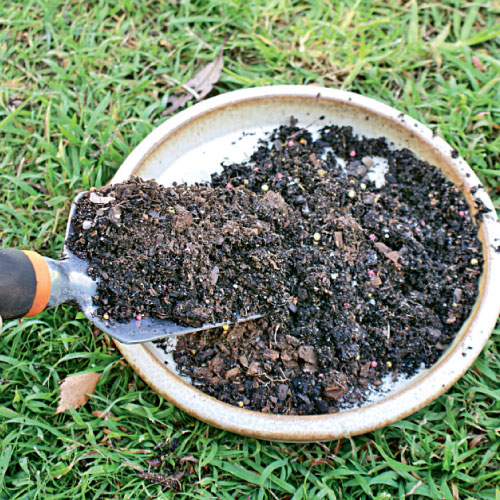
Step 2. Make a well
Make a well in the centre of the soil, then pour in water.
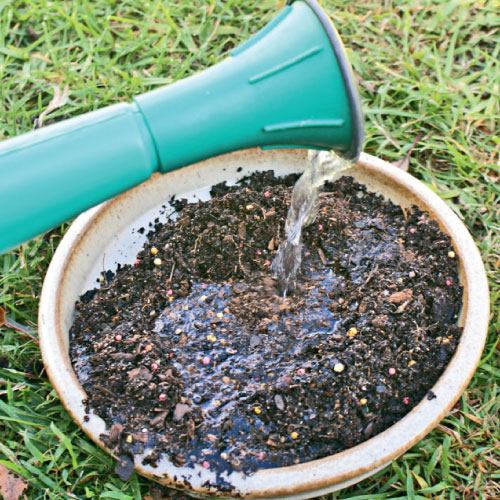
Step 3. Feel the soil
Feel the soil to see if the water pools or is absorbed into the soil.
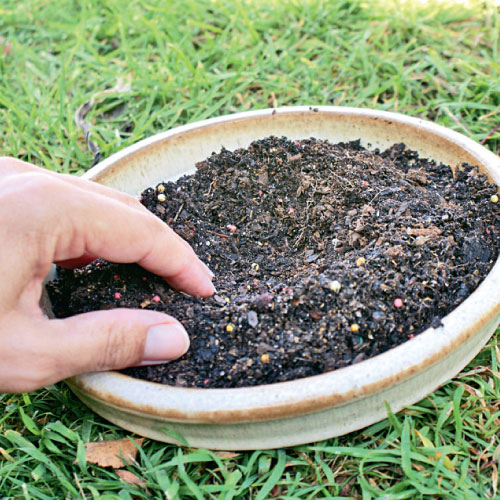
Turf trouble
Dry patches of grass in lawns are often caused by water-repellent soil. Most rolls of turf are planted in a soil with a high sand content and are more prone to the problem than lawns grown from seed.
Rule out other potential problems like pests or diseases, compaction, too little or too much water, and salinity before you treat for water repellence.
Apply a wetting agent at the beginning and end of spring, then again at the beginning of autumn, watering the grass deeply with a hose after each treatment.
Pick the right plants
There is no quick solution to the problem of water-repellent soil and managing it takes time and effort.
Adding organic matter and clay soil, together with a wetting agent, can improve the absorption of water, as both of these materials hold water well.
Compost increases the level of micro-organisms in the soil that eat away at the waxy coating.
Using an organic mulch will also help to retain moisture, as it breaks down into the soil.
Lift up the mulch every couple of months to check that it hasn’t stuck together and formed an impenetrable barrier. Break it up with a fork and incorporate new mulch to prevent this occurring.
For this front garden, the less-hardy plants were replaced with dry-tolerant plants, as they survive better during periods of little rain.
Blue fescue was planted on either side of the path to form a border. And to continue the silvery-green foliage theme, coastal correa, gazania, silver bush and westringia were added.
Liriope, lavender, lamb’s ears, dianella and hardenbergia are other dry-tolerant options.
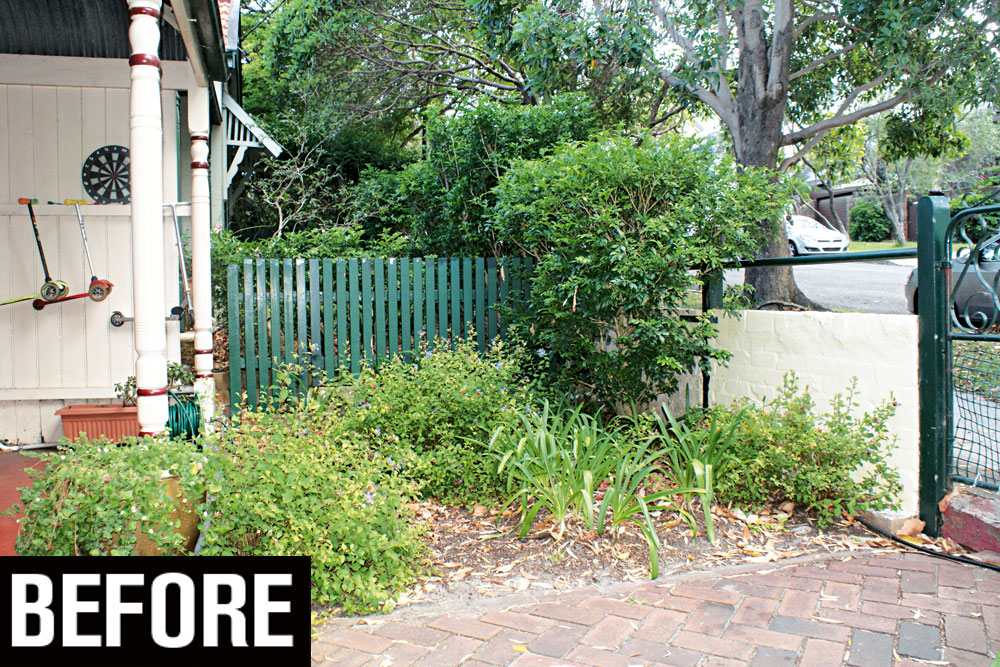
This front yard was neglected and the soil was in ill health
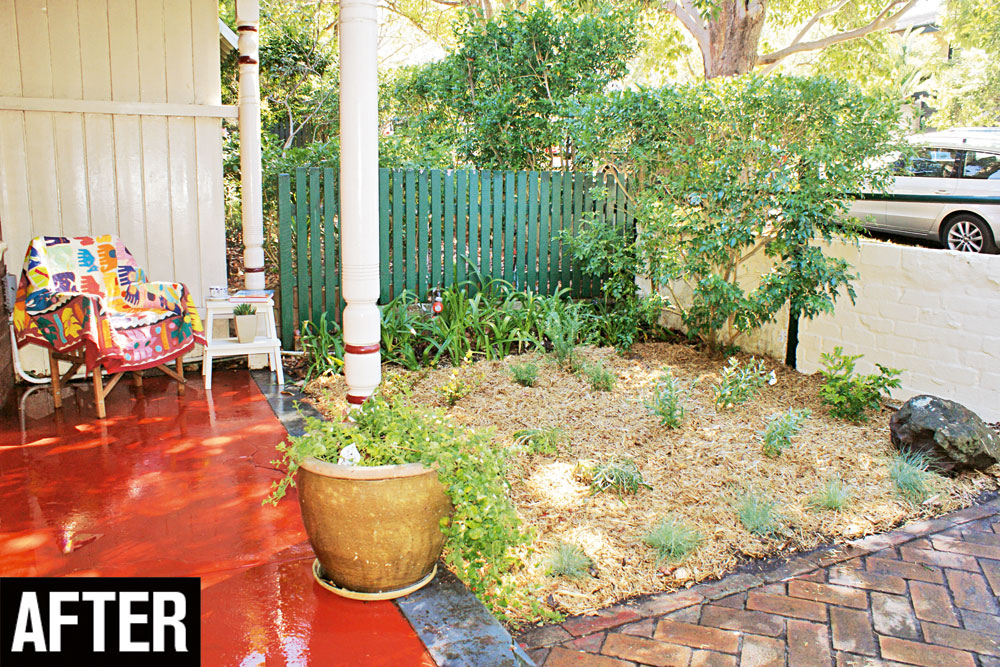
Treat potting mix
When water runs off the top of the mix or straight through the pot and out of the drainage holes without being absorbed, it’s usually a sign that the potting mix has become hydrophobic.
Avoid using old potting mix when planting in containers and replace the mix every few years. To improve water absorbency, immerse pots in a solution of wetting agent and water until the potting mix is saturated.
Apply a wetting agent with a watering can every 2-3 months at the recommended rate.
Improve the soil

Remove any existing mulchand plants that are being replaced,or to make room for new ones. Ensure you keep a good-sized rootball and clear out as much rubble, old plant matter, leaves and roots from the soil as possible.




Attach a hose-on soil wetting product and, working evenly across the garden bed, thoroughly drench the plants and soil. This acts like a detergent and breaks down the waxy surface on sand grains so water is able to penetrate the soil.



